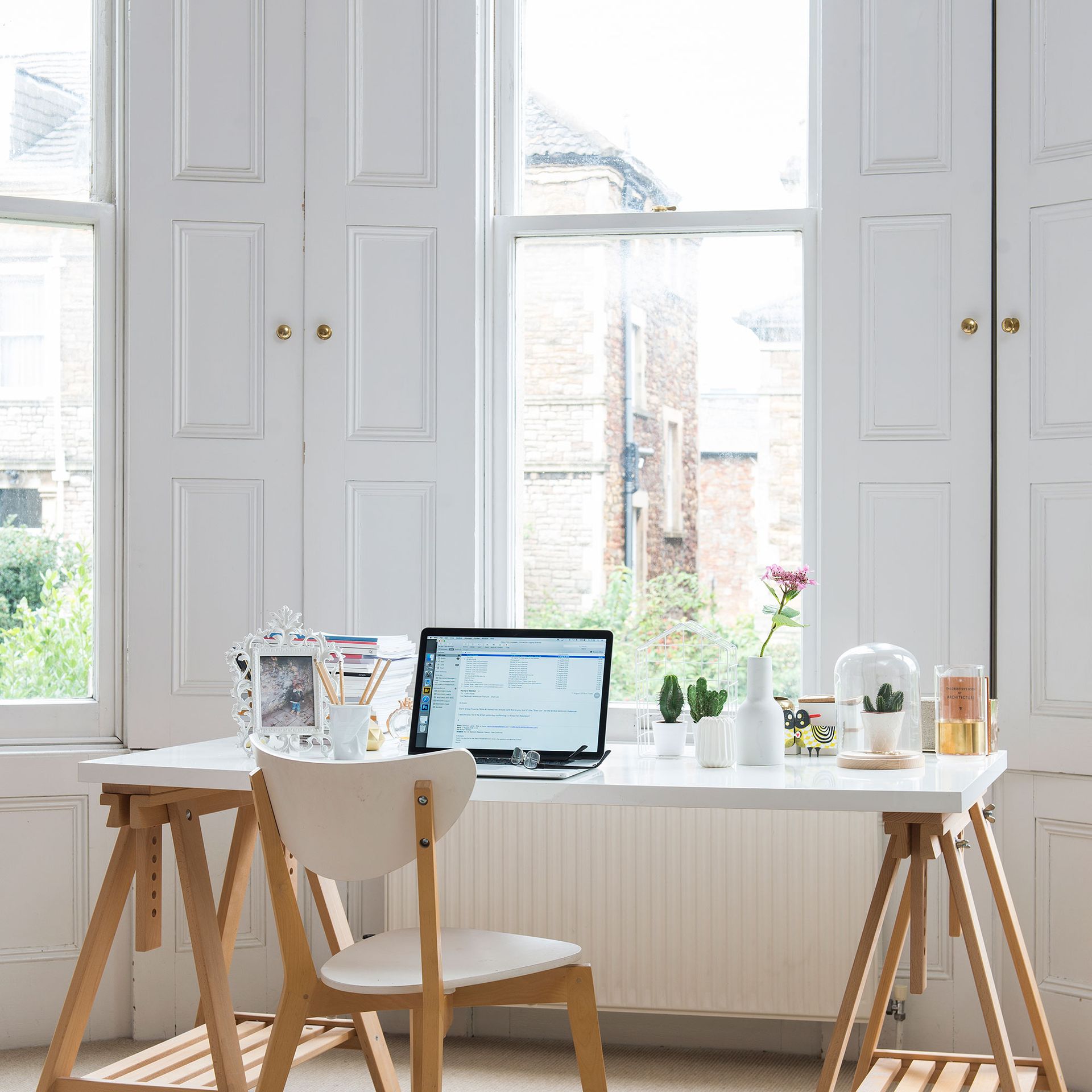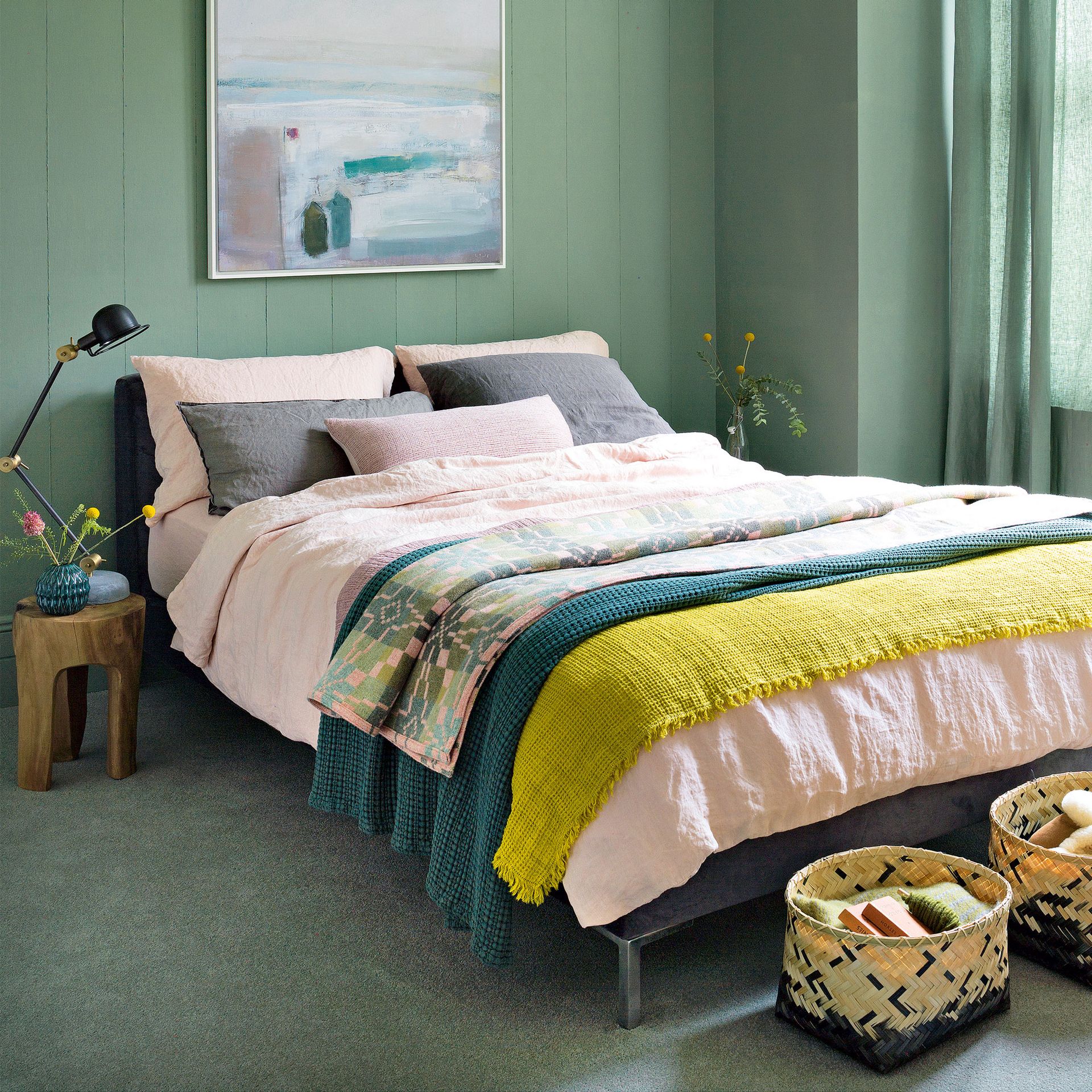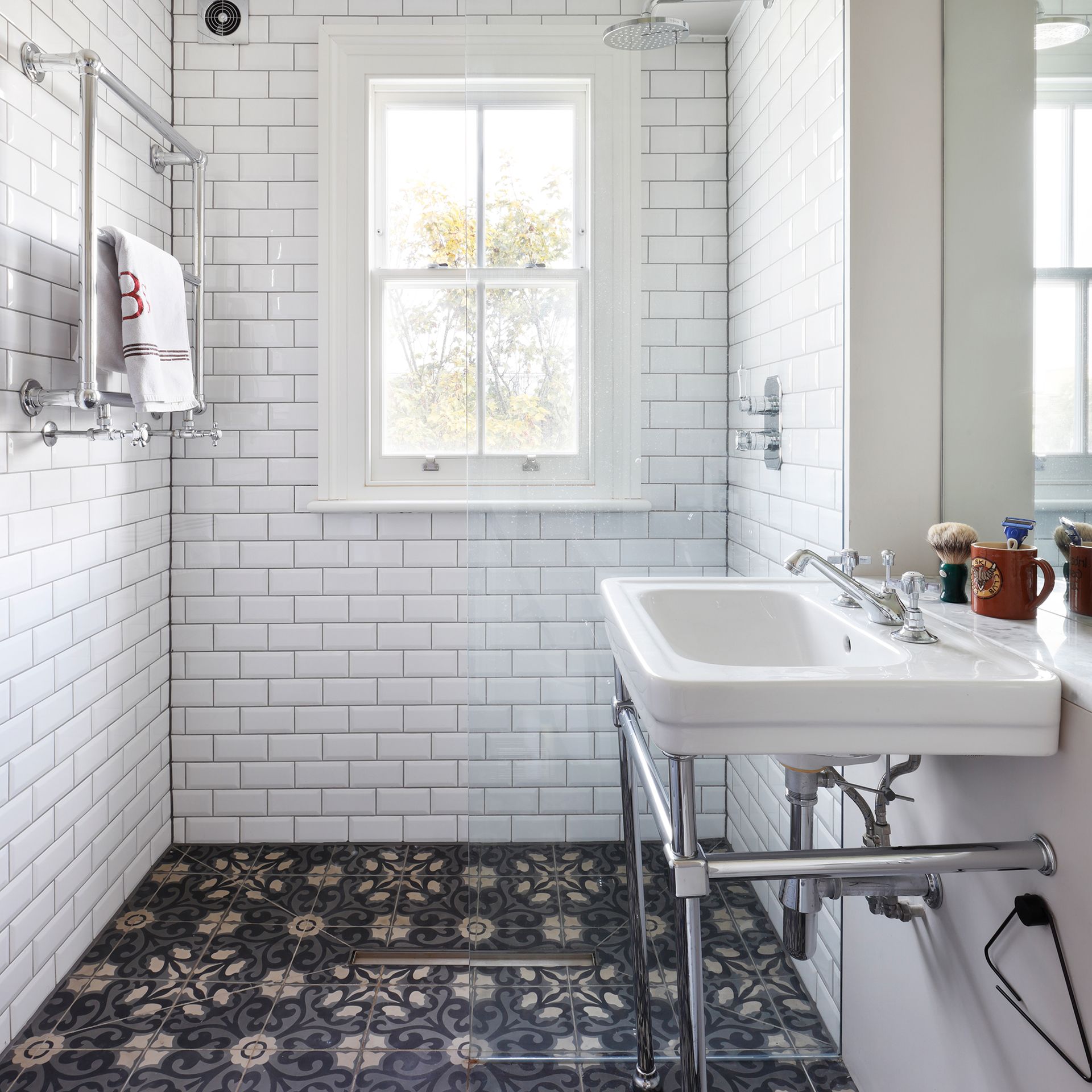11 things you should be cleaning with vinegar for sparkling results at home
From microwaves and windows to carpets and fridges, vinegar has long been our secret to a naturally sparkling home
- (opens in new tab)
- (opens in new tab)
- (opens in new tab)
- Sign up to our newsletter


Cleaning with vinegar is more than an old wives tale, on Instagram and TikTok we've seen so many people rediscovering the power of this versatile and affordable cleaning product.
Considering that you can pick up a 5-litre bottle of cleaning vinegar on Amazon for just £7 it really is one of the affordable best cleaning products for cleaning so many areas around the home. Whether you're cleaning a microwave or a fridge ditch your multi-product cleaning caddy and try cleaning with vinegar.
There are lots of aspects of your house that you may have overlooked when it comes to cleaning with vinegar, but our list will point you to the items which will come up as good as new after being cleaned with white vinegar solution. Plus our Ideal Home team has tried each vinegar cleaning trick in our test kitchen at Reading and in there, own homes to confirm that they really work.
'Whether you’re into eco-cleaning, or simply looking for ways to cut the costs of cleaning your home, white vinegar is a must-have kitchen staple,' says Emily Barron, cleaning expert at Rezigo (opens in new tab).

10 things you can clean with vinegar
White vinegar is handy for regular cleaning where a quick spritz with a diluted vinegar solution will help prevent the build of stains, dirt and grime, as well as those monthly deep cleans where you want to rid your house of any mould, mildew, and limescale build-up. For deeper cleans, try mixing white vinegar with bicarbonate of soda to create a powerfully active paste
This store cupboard essential can help to clean the bathroom and is also a hero when it comes to deep cleaning the kitchen.
1. Clean your fridge with vinegar

White vinegar keeps areas food-safe, so it's ideal for cleaning a fridge. 'Use a cleaning solution made by mixing together equal parts of white vinegar and hot water, grab a non-scratch scourer such as Marigold Cleaning Me Softly Non Scratch Scourer (opens in new tab) and scrub the fridge from top to bottom,' recommends Laura Marsden, Marketing Manager for Marigold.
Then all you need to do is wipe the shelves down with a microfibre cloth. This process deodourises, sanitises and dissolves grime quickly and efficiently, so your fridge will be thoroughly cleaned without any harm to food or your fridge from harsh chemicals.
2. Clean your stainless steel pans and utensils with vinegar
White vinegar's mild acidity is great for cleaning grime and dirt away from stainless steel. Use a diluted vinegar solution to wipe down your cutlery and pans with a microfibre cloth, or leave them to soak to remove more stubborn stains. Your utensils will be left sparkling in no time.
3. Clean your microwave with vinegar

Knowing how to clean a microwave properly can be notoriously difficult, but cleaning with vinegar can make the task a lot easier.
'Using a microwave-safe bowl, fill with 1/2 cup of vinegar and 1 cup water,' says Queen of Clean Lynsey Crombie (opens in new tab). 'Place in the microwave and put on high heat for 5 minutes. Let it sit in the microwave while it cools. You can then easily wipe down the inside of the microwave and any lingering odours should disappear.'
4. Clean your sink with white vinegar

White vinegar is perfect for getting rid of nasty sink odours and removing any stains from food or toothpaste. When we tried three natural methods to find out how to clean a stainless steel sink naturally cleaning with vinegar and bicarbonate soda came out top.
First, simply mix bicarbonate of soda with some water to make a paste and scrub it over your sink. Then spray it all over with white vinegar, which should activate the foaming reaction. Then simple rinse the sink down and try it with a microfibre cloth.
5. Clean your windows with vinegar

Windows and glass doors can quickly become grubby with fingerprints and condensation marks, but white vinegar is your secret weapon when it comes to how to clean windows.
Use a mixture of equal parts vinegar and hot water to clean the inside of your windows, adding a splash of liquid soap to remove any streaks. Wipe dry with a clean microfibre cloth.
6. Clean your outdoor furniture with vinegar

To keep your best garden furniture in tip-top condition, use a mixture of white vinegar and bicarbonate of soda to keep it clean. Whether your garden table and chairs are wooden, cast iron or plastic, white vinegar can be used to wipe away any traces of dirt or grime.
Remove any cobwebs, dust and surface dirt with a sponge or a stiff brush before applying your vinegar and soda paste in small circular motions. Rinse with warm water before moving on to the next section.
7. Clean your carpets with vinegar

Carpets can often be the victim of spillages, which if not dealt with can lead to stains that are difficult to hide, especially on lighter-coloured floors.
For cleaning a carpet clean-fluencer Lynsey Crombie recommends spraying the marked area with a white vinegar spray and leaving for a good five minutes so that it can start dissolving. 'Then blot the stain using a white cloth or paper towel', she says.
'I always advise blotting with white as this way you can actually see if the stain is being removed. Repeat the process if necessary and then rinse away using a wet cloth and a little washing up liquid.'
8. Clean grout with vinegar

If you've been wondering how to clean grout, there are a few tried and tested methods which can remove mould and mildew and get your grout back to its original white colour. White vinegar spray is effective at removing milder stains so that you can freshen up your bathroom or kitchen tiles and give your grout a good clean.
You can also try mixing white vinegar with bicarbonate of soda to create a paste that will remove tougher layers of grime.
9. Clean your cooker top with vinegar

Cleaning the cooker top should be done regularly, as removing food stains is a lot easier when they're fresh, so we recommend wiping your hobs after each use with a bottle of white vinegar spray.
If you're giving your cooker top a deep clean, leave some white vinegar to sit on it for 15 minutes before buffing it away with a scrubber brush. The vinegar's acidity will help to dissolve any stubborn food stains.
10. Clean your kettle and coffee machine with vinegar

Though we may not be able to see it, limescale can build up on the inside of our kettles and coffee machines, which can decrease even the best coffee machine and kettle efficiency over time. This is why it is important to know how to clean a kettle properly.
Simply fill your kettle or coffee machine with half water and half white vinegar, leaving to soak for 30 minutes. Then boil the kettle, empty and rinse thoroughly.
The vinegar should have broken down any limescale, but you may need to repeat if there's still some residue. We recommend doing this once a month to prevent build-up in the future.
11. Drains

Vinegar and bicarbonate of soda make the best DIY solution for unblocking a sink. While they will struggle with very stubborn clogs, they work a dream as a day-to-day drain unblocker alternative.
All you need to do is place some bicarbonate of soda down the plug hole followed by some vinegar. Then cover the plug hole with a damp cloth so when it starts to react it's focusing on the pipes.
After a few mins of leaving it to work, you can wash it through with hot water. Ideal Home's Deputy Digital Editor, Rebecca Knight, regularly uses this cleaning hack at home. 'I have a sink and shower that get clogged easily, so I use this hack every few weeks to keep them in good working order.'
What should you not clean with vinegar?
'It’s important to remember that vinegar is corrosive', says Chris Wootton, Managing Director of cleaning brand Poppies (opens in new tab). 'So, while it is ideal for cleaning most areas in the house, there are some surfaces that should be cleaned with caution.'
Avoid cleaning granite, marble, quartz and stone floor tiles with vinegar, and stick to mild soapy detergents instead. The same goes for any splashbacks or countertops made with these materials as well.
'Any surface that wouldn’t react well to acid, like unlacquered brass taps, should be cleaned with specifically designed products or less viscous solutions', adds Chris. 'Be wary of hardwood floors too. While some people do use this solution to clean hardwood, if acidic solutions get into the grains too often, it can warp the wood.'

What is the best way to clean with vinegar?
When cleaning with white vinegar, it's best to dilute it with water so that you can use it in large amounts. Straight vinegar is highly acidic so should be used in smaller quantities.
Preparing vinegar for use as a cleaning agent is simple. You want a ratio of roughly 1:1 parts water and vinegar, so refil an empty spray bottle to use with a microfibre cloth around the house. This will effectively clean your surfaces without damaging them.
'A diluted solution of white vinegar will take care of common bacteria, such as salmonella and E. coli', explains cleaning expert Emily Barron at Rezigo. 'If you’re cleaning areas where hygiene is integral, add in a squirt of antibac soap.'
Is it safe to clean with straight vinegar?
It is safe to clean with straight vinegar, though not on surfaces susceptible to corrosion, such as granite, marble, stone and quartz. Use straight vinegar to break down mould and limescale, but wear rubber gloves to protect your skin.
'The main safety concern when it comes to cleaning with vinegar is mixing it,' says a cleaning expert from Spare & Square (opens in new tab). 'It should NEVER be mixed with bleach or hydrogen peroxide. Mixing either of these agents with vinegar will release toxic gases and fumes.'

Katie Sims has been writing for Ideal Homes since spring 2022. She qualified from her Master’s in Media and Journalism in 2021 and has been writing freelance since. She has worked on Ideal Home’s ecommerce team where she researched the best home products on the market, and on the news team, researching the latest trends for feature pieces.
-
 Growing a cut flower patch - Sarah Raven explains how to plant for fresh flowers
Growing a cut flower patch - Sarah Raven explains how to plant for fresh flowersIdeal Home's garden expert Sarah Raven reveals how to grow a cut flower patch to ensure your vases are always brimming with blooms
By Sarah Raven
-
 'I just needed to have a black house' - This former pebble-dash house has been completely transformed
'I just needed to have a black house' - This former pebble-dash house has been completely transformedSee how upgrading the look of your home can totally transform it – and it's easier than you think
By Laurie Davidson
-
 'This rustic farmhouse felt like home the minute we stepped through the front door'
'This rustic farmhouse felt like home the minute we stepped through the front door'This mum of three restored a dated farmhouse and created a better life for her family in the process
By Laura Ewart


